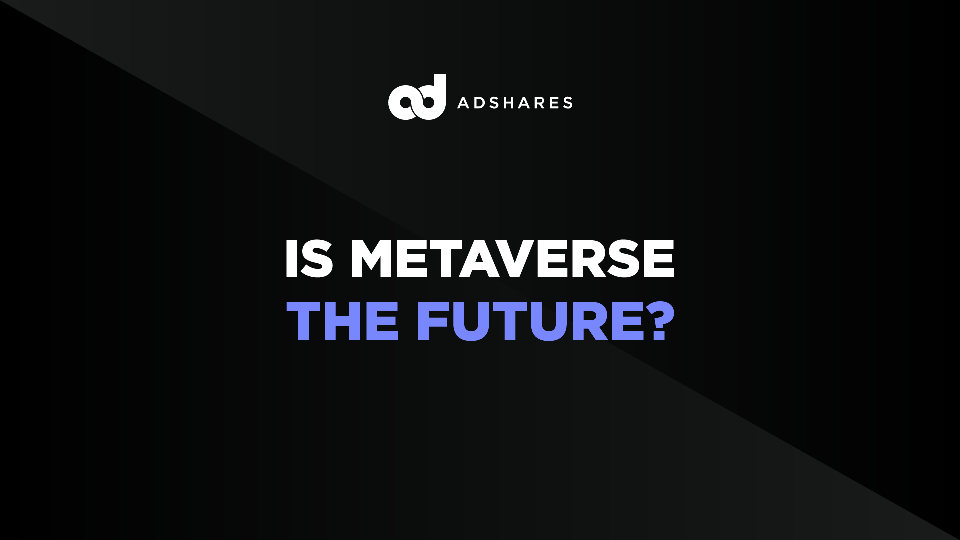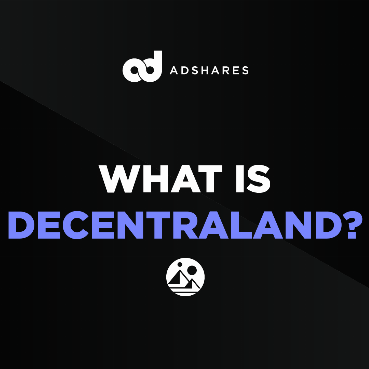Why Is Metaverse The Future?
Introduction
Ever since Facebook rebranded to Meta, the Metaverse has become the hottest topic of the town.
All the Metaverse hype will make you wonder — What is Metaverse?
In simple words, a Metaverse is a 3D universe where you live as a digital avatar and experience a virtual world that mimics real-life interactions. Here, you can meet people, play games, work, chat, and whatnot- in a more immersive way using augmented reality. In short, the Metaverse is a 3D marriage of your digital and real lives.
Metaverse is all about experiential reality; it’s about bridging ‘real-life-like presence’ in the virtual world.
Imagine trying clothes virtually before you actually buy them, testing a newly launched car on the Metaverse before you book it, breeding virtual pets, meeting your office colleagues in a virtual meet, or setting up a virtual museum. The possibilities of the Metaverse are endless.
This article will discuss Metaverse in detail and try to find out why Metaverse is the future of the internet, or perhaps the new internet.
Metaverse Is The Future Of Gaming, Thanks to NFTs!
If you ever made an in-game purchase, you would know that the value of that item is limited within the game you are playing. In short, the in-game items are not compatible with different gaming universes, i.e., they are not freely tradeable.
There are several ways to solve this problem. The first solution is to create the gaming universe within a single platform like Roblox. However, a simple SD hat that appears aesthetic in a Roblox environment will make no sense in a pixelated Minecraft world. Moreover, the attributes of an item, say a guitar that plays music, might not be supported in other games.
Other solutions include manually creating different versions of the same in-game item for every gaming ecosystem or inviting third-party designers to upload their 3D models of the in-game asset. But these two solutions will consume too much time and also demand technical skills from third-party developers.
Is there no solution?
Enter non-fungible tokens or NFTs!
NFTs are blockchain tokens that allow you to seamlessly create, represent ownership, and transfer virtual goods. And guess what? Since NFTs live on the blockchain, you can use mint in-game items as NFTs and use them across multiple Metaverse games built on the blockchain. Thanks to this, you can freely trade NFT-based in-game items as you please — buy, sell, trade, or even rent.
Let’s take an oversimplified example to understand how NFTs enable players to use in-game assets outside the game easily.
Say, you purchased a shirt for your character in Game A. NFT technology will create a permanent receipt of this purchase and allow you to redeem the same shirt in Game B.
Your Next Office Meeting Might Be Hosted In A Metaverse And Not On Zoom
Meta (formerly Facebook) is betting big on the Metaverse in an attempt to get the first movers’ advantage from this emerging trend. From innovating Oculus Quests headsets to recently experimenting with haptic gloves, Meta is all in for the Metaverse adoption.
Meta is also working on a virtual reality (VR) meetings app named Workplace to bring office meetings in the Metaverse. The company also said that they are experimenting with a social space called Horizons. The best part is that Meta claims that during VR meetings, participants can still use their real-world computers, thereby blurring the distance between the virtual experience and the real world.
Another example of integrating VR with online meets is VRChat. This application is focused on online hangouts and chatting.
There is no denying that applications like Zoom, Microsoft Teams, and Google Meet, among others, proved to be a boon in the pandemic-hit world. However, the problem with these applications is that they facilitate meetings on your 2D desktop screen. It’s like seeing your surroundings through a window and not being a part of it. Virtual reality, along with Metaverse, gives you that feeling of being in the meeting rather than attending a meet.
Microsoft realized the importance of a real-life-like presence in a virtual space, and thus, they also jumped on the Metaverse bandwagon. Microsoft revealed they are working on adding 3D avatars to Teams to unlock an immersive meeting experience.
Looking at all such virtual reality advancements in the online video conferencing space, it is clear that Metaverse is the future of video calls and meetups.
Well, virtual reality and Metaverse isn’t just the next video conferencing tool.
Paul Tomlinson entirely works in a virtual environment. Paul manages tax and financial-processing software for a company. His office setup includes four different computer monitors. Paul was finding it challenging to work on four monitors simultaneously, so he switched to the Oculus Quest headset. Within the Oculus ecosystem, he uses a productivity app called Immersed. This VR app allows him to work on multiple virtual screens replacing all his physical monitors.
He says he has no complaints to strap a VR box to his face for eight hours a day. Paul calls himself an outlier who is brave enough to adopt technologies way before others.
If the VR and Metaverse technology continues to grow at a rapid pace, within 10–12 years, Paul would no longer need to wear a VR headset; the VR technology would be integrated into a sunglass-sized wearable.
People Are Making Money In The Metaverse Just Like You Would Earn In The Real-World
It is too early to conclude that Metaverse is just a cool gaming concept or an immersive video conferencing technology. To be precise, the Metaverse is a full-fledged virtual world that has all the real-world elements, be it a functioning economy, human interactions, trade, museums, games, you name it.
Talking about the economy and earning money, Carrie Tatsu has been making her living by designing, marketing, and selling avatars, pets, and accessories for citizens of a Metaverse-themed game called Second Life. Carrie says that people were emotionally attached to their virtual pets just as they would with real-life pets.
Roblox, the Metaverse leader, has always focused on providing income opportunities for their players. Manuel Bronstein, the Chief Product Officer at Roblox, says that in the future, people will buy virtual products (accessories, clothing, gaming skins, weapons, etc.) from a Metaverse store just as they buy products from an actual store.
Joshua, a 17-year-old digital artist, studying in London, earned around $1000 from his Roblox art. His parents were shocked, just as you are after reading that a teenager could make $1000 while enjoying his favorite game.
Another popular example where players are making money while playing Metaverse games is Axie Infinity. This blockchain-based game where players purchase, train, and breed Pokemon-like creatures to sell them for cryptocurrency later.
Such digital opportunities indicate that Metaverse is the future of making money, especially for Metaverse players and artists.
Did You Know Marshmello And Ariana Grande Did A Live Concert In The Metaverse?
Metaverse is home to virtual social gatherings. A popular example would be Marshmello’s live concert held in Fortnite’s virtual concert stage in 2019. Fortnite enabled players to attend this concert within the game. Not only Marshmellow, recently in August 2021, Ariana Grande also went live on the Fortnite stage with millions of fans worldwide.
Not only popular names like Epic Games or other blockchain-based Metaverses, but individuals are also hosting social interactions in a Metaverse setting.
Cathy Hackl, labeled as the godmother of the Metaverse, described how her son organized his 9th birthday party on Roblox amid the pandemic. For a bit of background, Roblox is a voxel-based Metaverse game that allows players to create various games in the Roblox universe.
Describing her son’s birthday party, Cathy said her son and his friends joined the birthday party as their virtual avatars and played different games together in the Roblox Metaverse. She also emphasized that virtual interactions don’t make social gatherings less real; for her son, it’s very real.
Today, millions of people are spending hours in Metaverse-based games like Roblox and Fortnite. This indicates Metaverse is the future of 3D social gatherings. The major difference between watching a live event on platforms like Youtube and attending digital events with your virtual reality (VR) headsets on, is a sense of real-life-like presence.
The Bottom Line — How Far Are We In Building The Metaverse?
To create a fully functional Metaverse, we need different technologies from VR hardware to voxels-based transitional games like Minecraft to blockchain and NFT technologies. We have seen tremendous improvements in VR technology in recent years. With Oculus Quest headsets, VR hardware is now mainstream.
Talking about blockchain and NFTs, these technologies enable users to track and transfer digital goods within the Metaverse reliably.
There is no denying that Metaverse is still in its infancy as of now. However, we are slowly gathering all the pieces of the Metaverse puzzle — NFTs, VR headsets, haptic gloves, blockchain, etc., to make Metaverse a reality in the coming decade.




